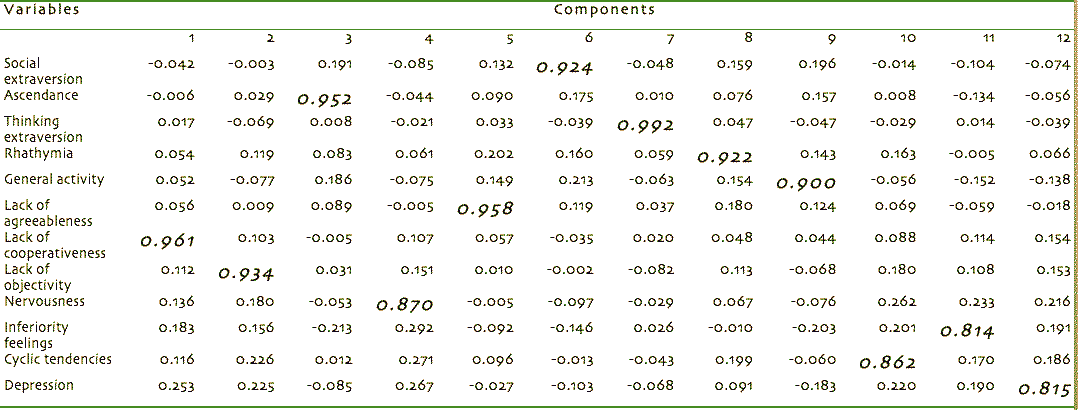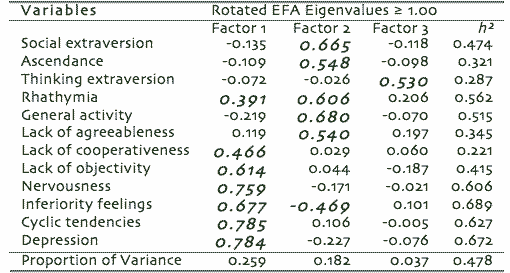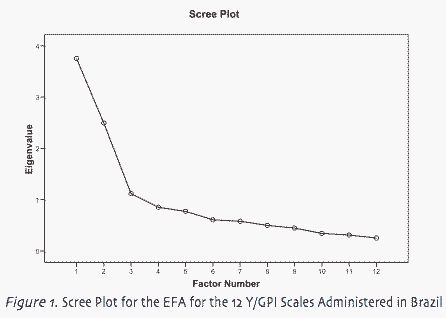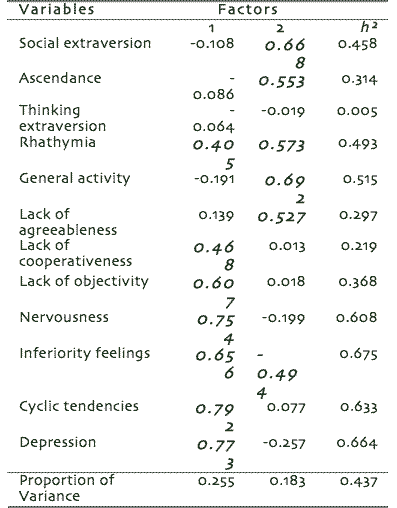Shiken: JALT Testing & Evaluation SIG Newsletter
Vol. 13 No. 2. May 2009. (p. 19 - 23) [ISSN 1881-5537]
Choosing the Right Number of Components
|
 James Dean Brown University of Hawai'i at Manoa |

| "a number of 'stopping rules' have been proposed to determine when the researcher should stop adding factors." |
[ p. 19 ]
Each of these topics will now be explained and exemplified in turn.
Table 2. Initial EFA for the 12 Y/GPI Scales Administered in Brazil |
Table 3. EFA (with Varimax Rotation) Loadings for the 12 Y/GPI Scales Administered in Brazil |
[ p. 20 ]
(2) Scree test
 |
Table 4. EFA (with Varimax Rotation) Loadings for 2 |
[ p. 21 ]

[ p. 22 ]
| "But which method is correct? I guess the safest answer is that no method is correct. Instead, some combination of the five sets of issues must be included in making the decision and explaining it to the readers of the resulting research report." |
| Where to Submit Questions: |
| Please submit questions for this column to the following address: |
|
JD Brown Department of Second Language Studies University of Hawai'i at Manoa 1890 East-West Road Honolulu, HI 96822 USA |
[ p. 23 ]